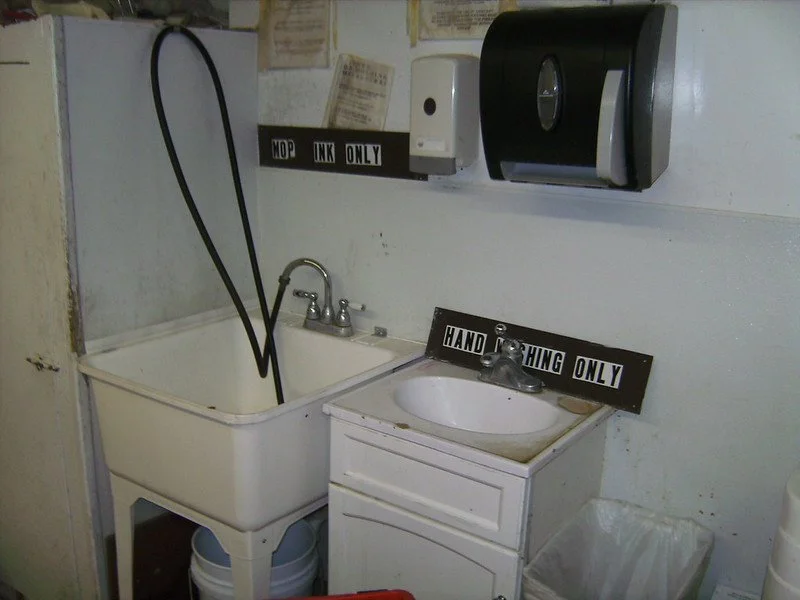The Antique Knee-Level Mopping Sink: A Glimpse into Historical Household Design
In the history of domestic architecture, few fixtures offer as much insight into past lifestyles and social structures as the knee-level mopping sink. Originally designed to streamline household chores in stately homes and manors, these antique sinks reflect the ergonomic and practical considerations of their time.
The Purpose and Design of Antique Knee-Level Mopping Sinks
What is a Knee-Level Mopping Sink?
A knee-level mopping sink is a low-height sink designed specifically for filling and emptying mop buckets with ease. Typically found in utility rooms or back corridors, these sinks served a purely practical role within the household, set at an optimal height to reduce the strain of heavy lifting during cleaning tasks.
Materials and Craftsmanship
These sinks were often crafted from durable materials like stone or early porcelain, chosen to withstand heavy use. Many also feature intricate detailing or inscriptions, elevating them beyond simple utility and adding aesthetic value. This attention to craftsmanship meant that even a humble item like a mopping sink could reflect the artistry of its time, ensuring its place as a valued artifact today.
The Role of Knee-Level Mopping Sinks in Household Management
Practical and Ergonomic Design
The knee-height positioning of these sinks was no accident; it was a deliberate design choice aimed at making household chores more efficient and less physically taxing. By allowing workers to fill and empty buckets without lifting, these sinks minimized the risk of strain, prioritizing the well-being of household staff—a reflection of the emphasis on practicality and ergonomics during that era.
Location and Social Implications
Placed in less visible areas, such as back halls or utility rooms, the knee-level mopping sink highlights the era’s desire to keep domestic labor separate from the main living areas. This separation underscored the social hierarchy within the household, where certain spaces were designated for service staff while others were reserved for the family and guests.
The Lasting Legacy of Antique Mopping Sinks
From Functionality to Decoration
Today, many of these sinks remain in existence due to the durability of their materials. They are often repurposed as decorative pieces in modern homes, appreciated not only for their historical significance but also as unique elements of interior design. Antique enthusiasts and architects alike value these sinks as symbols of a time when even the simplest household items were crafted with care and attention.
Cultural Significance
These antique mopping sinks serve as cultural and architectural relics, offering a window into historical household routines and values. They remind us of the continuous evolution of home design in response to changes in social structure and domestic work.
FAQs About Antique Knee-Level Mopping Sinks
Q: Why were mopping sinks set at knee level?
A: The knee-level height made it easier to fill and empty mop buckets without lifting, reducing strain on the household staff who used them.
Q: What materials were used in antique mopping sinks?
A: Antique mopping sinks were commonly crafted from durable materials like stone and early forms of porcelain, chosen for their ability to withstand heavy use over time.
Q: Where were these sinks usually located within the home?
A: These sinks were typically placed in utility rooms, back halls, or other hidden service areas, keeping the labor-intensive aspects of household management out of sight from the family and guests.
Q: Are antique mopping sinks still used today?
A: While they’re no longer used for their original purpose, many antique mopping sinks are repurposed as decorative elements in modern homes. They add unique historical character and charm to contemporary spaces.
Q: What does the design of these sinks reveal about past social structures?
A: The placement and design of these sinks reflect a time when household tasks were delegated to staff and kept out of view. This setup highlights the division of social spaces and the importance of efficiency in domestic work.
Q: Why are antique mopping sinks considered valuable today?
A: These sinks are valued as historical artifacts due to their craftsmanship, durability, and insight into past domestic practices. Collectors and interior designers often appreciate them as unique, aesthetic elements that also carry cultural significance.

